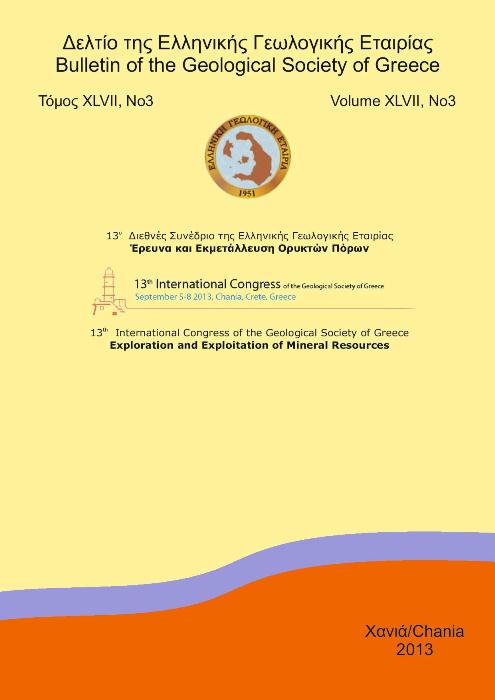Improved earthquake location in the area of North Euboean Gulf after the implementation of a 3D non-linear location method in combination with a 3D velocity model.
Résumé
Considerably improved hypocentral locations of the 274 earthquakes, with magnitudes between 1.5 to 4.1 Ml recorded during the period from 2009 to 2010 by the Hellenic Unified Seismographic Network (HUSN), have been obtained for the area of North Euboean Gulf after the implementation of a 3D non-linear location algorithm and a previously calculated local 3D velocity model for both P and S wave
phases. To assess the effectiveness of the 3D locations we compared the results with the solutions obtained with alternative 1D velocity models such as the minimum 1D model calculated with the VELEST algorithm and the 1D model used by the National Observatory of Athens (NOA) for daily earthquake analysis. We were further able
to assess the location accuracy of each model by comparing the location results for a number of quarry blasts that occurred in the area in that period. The use of the local 3D velocity model provides considerably more accurate than the minimum 1D model which in turn provides more constrained locations from the 1D model of NOA. The epicentral locations calculated by each model are almost similar; however the depth distribution of the events varies, with depth differences of up to 12 km for some earthquakes. The results prove that accurate, local models are necessary in order to achieve more accurate locations for the events in a local area.
Article Details
- Comment citer
-
Mouzakiotis, E., & Karastathis, K. V. (2013). Improved earthquake location in the area of North Euboean Gulf after the implementation of a 3D non-linear location method in combination with a 3D velocity model. Bulletin of the Geological Society of Greece, 47(3), 1185–1193. https://doi.org/10.12681/bgsg.10974
- Rubrique
- Articles

Ce travail est disponible sous licence Creative Commons Attribution - Pas d’Utilisation Commerciale 4.0 International.
Authors who publish with this journal agree to the following terms:
Authors retain copyright and grant the journal right of first publication with the work simultaneously licensed under a Creative Commons Attribution Non-Commercial License that allows others to share the work with an acknowledgement of the work's authorship and initial publication in this journal.
Authors are able to enter into separate, additional contractual arrangements for the non-exclusive distribution of the journal's published version of the work (e.g. post it to an institutional repository or publish it in a book), with an acknowledgement of its initial publication in this journal. Authors are permitted and encouraged to post their work online (preferably in institutional repositories or on their website) prior to and during the submission process, as it can lead to productive exchanges, as well as earlier and greater citation of published work.



